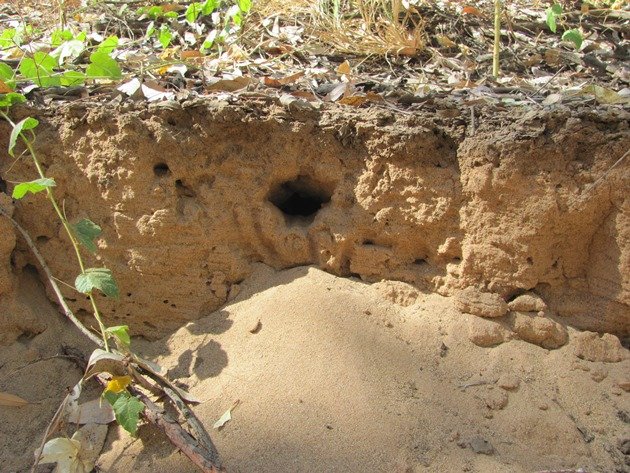
Pardalotes are an endemic species to Australia and the rarest of all can be found in Tasmania and is called the Forty-spotted Pardalote, which we have had the privilege of observing. However, around the Broome area we are currently listening to the constant call of the tiny Striated Pardalote. It is calling incessantly with two or three notes and is busy making holes in any area that it can easily dig. They are digging along the edge of graded roads, tracks, river-banks and old quarries. In among the trees they are hard to see, due to their size, but as soon as they are down lower on the edge of the area that they are digging they are more obvious. The fact that they don’t appear to be able to do anything quietly at this time of year brings them to your attention. In the past we have seen Striated Pardalotes using a gravel pit pile of sand alongside Red-browed Pardalotes and on returning to this site recently the sand had been removed for use and they had been required to look for an alternative site. The Red-browed Pardalotes and Striated Pardalotes were struggling with harder gravel walls and you could see that they could only get in to a certain depth. The birds then gave up and moved to another area, which resulted in lots of small indentations across the gravel wall. The nest site does need to be fairly deep to satisfy the Striated Pardalote and the amount of sand that has been removed below indicates the depth they have gone with this nest site, which is still a “work in progress”. This is right beside a walk track and often you observe these piles of sand, which indicate a nest hole.
Striated Pardalote nest hole in progress
You can clearly see the area at the base of the hole where their feet have been and the removal of the sand must take them some time. The hole tends to go in and then downwards and needs to be large enough for the nesting Striated Pardalote to sit and turn around in.
Close up of a hole being dug
It is not uncommon to observe these nest holes quite close together and the one below was nearby and was only at the initial digging phase. It may not be completed due to the requirement of a certain depth to satisfy the Striated Pardalote potential parents. You can see the start of a failed attempt to the left of this hole.
A second Striated Pardalote nest hole in progress
I have never been able to photograph a Striated Pardalote close up until this week. I have a small compact camera and generally they are too quick or too heavily camouflaged in the trees. Well, to be perfectly honest I just spend more time observing Striated Pardalotes than considering taking a photograph. All of a sudden there was a Striated Pardalote really close to me calling and generally teasing us. Grant said “just get your camera out!”. This is where I usually attempt to unzip it from the little pouch hung around my hips and the bird in question flies off. If I get beyond the unzipping phase I can expect it to fly off as soon as I turn the camera on. So, I have the camera out and I have it turned on and I turn the camera towards the Striated Pardalote and………well, it was still there and I took a photo!
Striated Pardalote
It then turned and I thought that was going to be my one and only photograph of a Striated Pardalote, but I got one of it turned.
Striated Pardalote
It was even obliging enough to turn back for some more photographs to show off its splendid colours.
Striated Pardalote
All of these photographs were taken with the Striated Pardalote being ridiculously close to us with a small compact camera and it was just one of those lucky days when everything falls into place and an opportunity is thrown your way and you grab it!



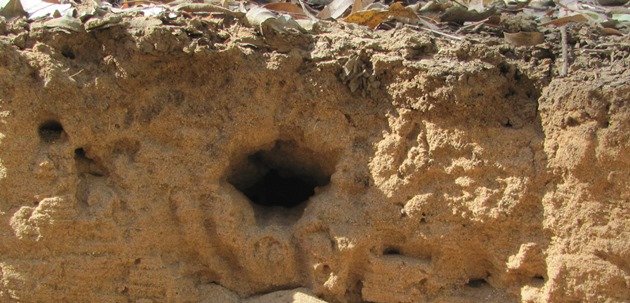
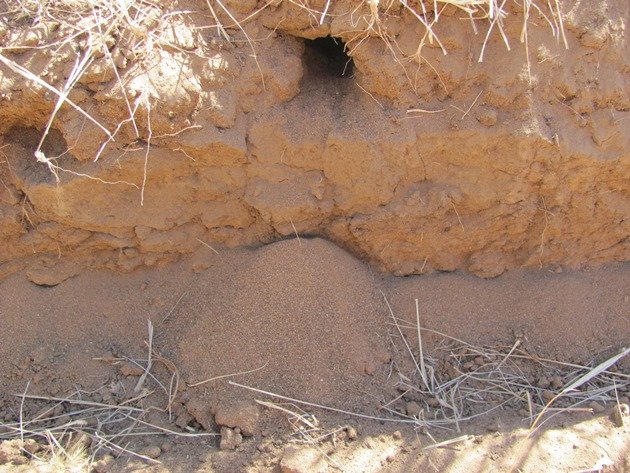
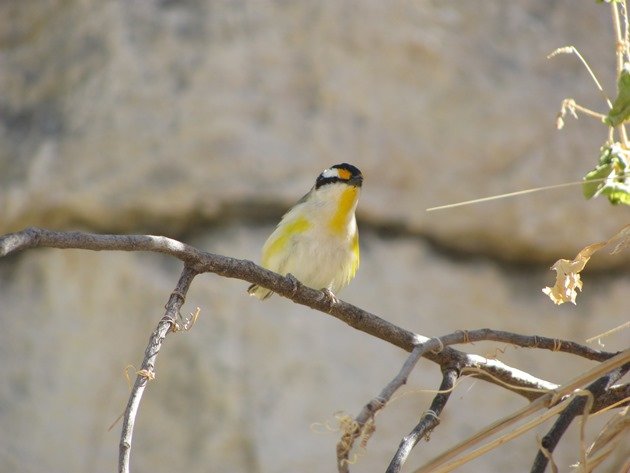
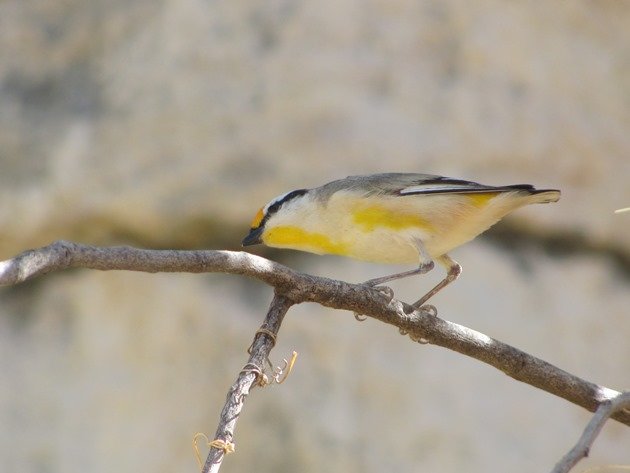
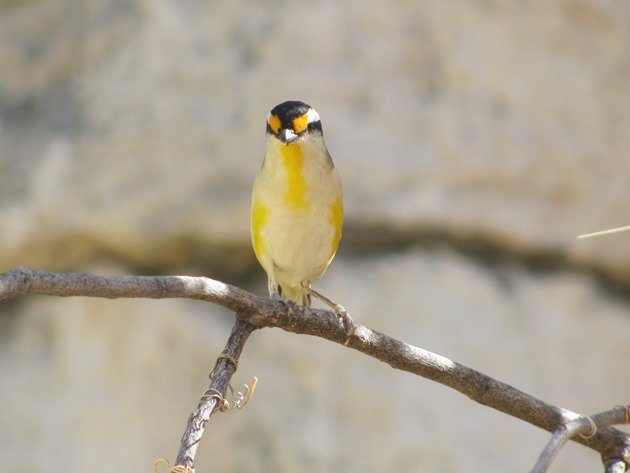
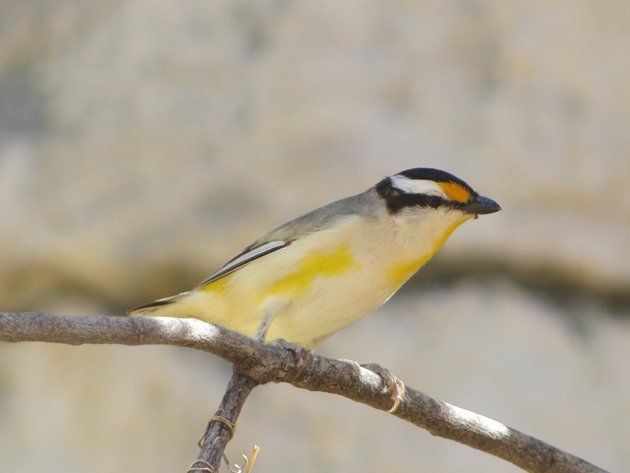







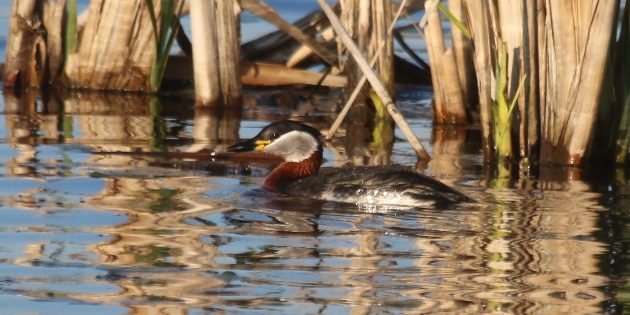




Fascinating, Clare! And such a lovely delicate looking bird to be digging serious holes in the dirt. Glad you got lucky with the pix. Lucky us!
Karen
Thanks, Karen! They make a lot of noise for a little bird! 🙂
Zippers and velcro fasteners are SO bad for birding, but sadly you can’t get bags with buttons anymore. Yes, the good old button, I miss it dearly.
And these pictures of such a tiny and active species are amazing!
Thanks, Jochen! Crunchy tracks/trails are bad for birding too……. don’t like those dumped little rocks! Bulldust and sand is the best!
Buttons, press-studs, silent cameras when you turn them on…bring it on! 🙂
Yeah, crunchy trails … at one of my survey sites in Indonesia, the trails are so densely covered in dead leaves that walking on them sounds like you are constantly squeezing a bag of corn flakes. Horrible. I walked the trails for a week with no hint of a pheasant. Then it rained heavily, the leaves softened, I walked quietly and saw 7 Crested Firebacks within an hour! The distribution map of the Firebacks therefore only shows the areas where I encountered rain… Bad, bad science.
Beautiful pictures of that tiny bird.
Thanks, Pat.
Hi i have had striated pardalotes nest at my house for three years running was just wondering where they go . As they are only here around Xmas. I live in mandurah
Hi Paul,
Maybe you only have them breed at that time of year or maybe they migrate, but I do not know where exactly! They are around Broome all year, but not always calling and mainly nest during our dry season.
Birdlife Australia say this…
The Striated Pardalote can be found throughout much of Australia, and across this range there are numerous populations and subspecies. Despite being tiny birds, some populations undertake remarkable migratory movements, while others remain in the same area throughout the year. In some populations, some of the birds migrate while others remain behind. Clearly, the movements of the Striated Pardalote are complex. The best-known migratory population breeds in Tasmania and makes regular seasonal movements across Bass Strait, where they mix with various mainland-breeding populations.
We have what started with a pair of striated pardies, now joined by a third, in the base of one of our pot plants (the water well type) hanging off a rail in our outdoor area, right outside our kitchen door! They have been here a few days – not sure exactly, as we were away from home for the best part of a couple of days during the past week. We are in Pittsworth, south West of Toowoomba, on the Darling Downs, Queensland. I can’t see how to add photos – I have several.
Hi Sandra,
That’s interesting and I hope you can keep an eye on them and see what happens next! Do you have a website where you put photos and I could add the link?
Hi Clare and Grant – I don’t have a web site, but I could email photos to you if you are interested. They have been coming less of late and of course we don’t know if that is because they have found a better place if their mating is done elsewhere.
hi there, have a pair currently nest constructing in my pot plant , this morning there were 4 competing over the pot, now one pair is spending alot of time in there , got amazing pics I live in mandurah w.a
What an amazing experience for you, Andrea…enjoy it!
Wonderful photos you managed to capture. We have a breeding pair of striated pardalotes that made a nest in our dirt pile. We had heavy rain and saw that the hole had collapsed. We gently dug … kept digging around quite far into the mound and found the nest. To our delight the little chicks were still alive !! Mum had built an extremely robust nest almost encasing the young. We have now carefully moved the nest into a nesting box in the same location..covered it against rain and turned the entrance from the wind. Observing with binoculars from around 100 metres away, we saw both parents flitter around the box and finally go in. That appears to be all we can do. We will check in the morning. We discovered that mum dug in to the mound .. approximately 40-60 cms then at one point burrows downwards.
What lovely little creatures they are. Cheers